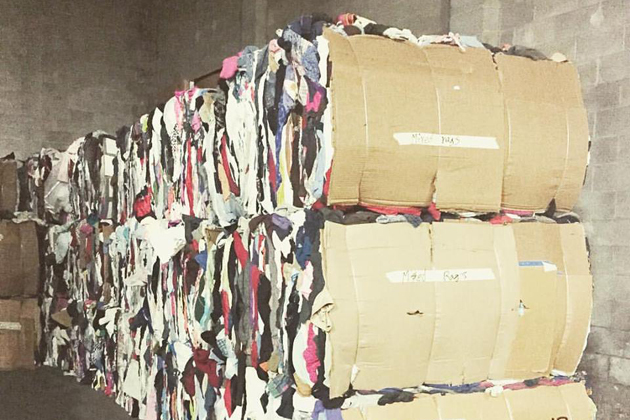
By Elisabeth Reed
Garage sale season is in full swing. Many of you might be cleaning your closets & deciding what items in your home to get rid of. At the end of a garage sale, there is always stuff no one purchased. Most people will then donate these items to charity: to places such as Goodwill, the Home Sweet Home Mission Mart, or into one of the various donation bins stationed around town. But did you know that only about 10% of your donated items actually end up at the secondhand stores? These organizations are overloaded with donations, finding themselves with more FAR MORE clothing, household goods and products than they can sell at their retail locations. Because of this, they will sell the remaining donated items to large companies that export the used clothing to less developed countries around the world, from Uganda to Haiti. Secondhand stores are paid by the pound for the clothing from the exporters and in turn can use this money to provide services for the local community. This seems like a win-win situation. You donate your clothing, avoiding a landfill, and although it might end up in Africa, you are still benefiting your local community since these organizations will use the profits from their exported goods for services such as job training, homeless shelters, and food banks.
On the flip side, secondhand clothing exports from the United States has had a devastating effect on textile and apparel factories and manufacturers in these less developed nations. Why make new when you can buy these castoffs for cheap? Why develop a skill or labor when the only available work is selling secondhand clothing? And although you may think you have avoided a landfill by donating to charity, what you have really done is just kick the can down the road. What happens to our secondhand clothing once it falls apart in Africa? It still ends up in a landfill, but in a landfill with little regard to or understanding of environmental safety.
The good news is you can be part of a better practice by… shopping secondhand! When you buy from places such as the Mission Mart, you contribute to the local economy, help reduce the inventory sent overseas, and prolong the shelf life of a product that has more life to give. Since these organizations are overloaded with product, you have a variety of choices at the most reasonable prices. You are not taking product from others in need: remember these organizations have far more than they can sell. If you have never shopped secondhand or only for Halloween costumes, I encourage you to give it a try. Clothing at secondhand stores is in good shape and on trend with current fashion. Shopping secondhand is one of the most environmentally and socially responsible ways to shop for clothing — so get out there and go thrift shoppin’!
Elisabeth Reed teaches fashion merchandising classes at Illinois State University. She grew up in Bloomington Normal, graduating from Normal Community High School in 1996. After receiving an undergraduate degree in architecture from the University of Cincinnati and a master’s in fashion design from the Savannah College of Art & Design, she realized that there was no place quite like home and returned to Bloomington in 2008. Elisabeth lives with her husband, Matt and their two wild little boys in historic Founder’s Grove.
The opinions expressed within WJBC’s Forum are solely those of the Forum’s author, and are not necessarily those of WJBC or Cumulus Media Inc.






